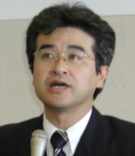11:10 - 12:30, No.2 Conference Room
Workshop D
Asbestos Litigation in Japan
Chairs: Takeshi Furukawai and Barry Castleman
 |
Takeshi Furukawa
Lawyer,Takeshi Furukawa Law Office, Japan
ABSTRACT:
Yokosuka city, which is located at the entrance of Tokyo Bay, has been historically an important naval base with a major navy dockyard since the Meiji Restoration. After Imperial Japan was defeated in 1945, the U.S. navy requisitioned the base and the dockyard, and now the U.S. Seventh Fleet is using the facilities under the Japan-U.S. Security Treaty.
After the defeat in 1945, the U.S. Navy established a naval ship repair facility in this Yokosuka Base to repair and renovate various naval ship, such as aircraft carriers and submarines. Especially during the Korean War and the Vietnam War, the workload reached its peaks in the facility.
Although a huge amount of asbestos has been used in naval ships to prevent the shell-triggered fires from spreading, the U.S. Navy has been giving poor attention to the health risks which its Japanese employees faced, and failed to warn them of the risks related to asbestos. As a result, the workers had mounted and/or removed asbestos products without any protective measures supplied until 1980s. From 1980, the legally obliged pneumoconiosis medical examination came to be conducted on a large scale, then the issue that the Japanese workers in the base were affected with asbestos-induced pneumoconiosis was revealed.
In July 1999, 12 former base workers (in some cases, their bereaved families) filed a collective damage suit in the District Court against the Japanese Government, their employer. In October 2002, the District Court gave a decision which favored all the workers. The Government, however, appealed claiming that three of twelve workers filed after the period of extinctive prescription on the damage claim had elapsed. The High Court decided in favor of the Government and the Supreme Court supported the High Court's decision.
Following the initial case, 22 and 11 former asbestos workers collectively filed similar damage suits in the District Court. These second and third suits are now pending.